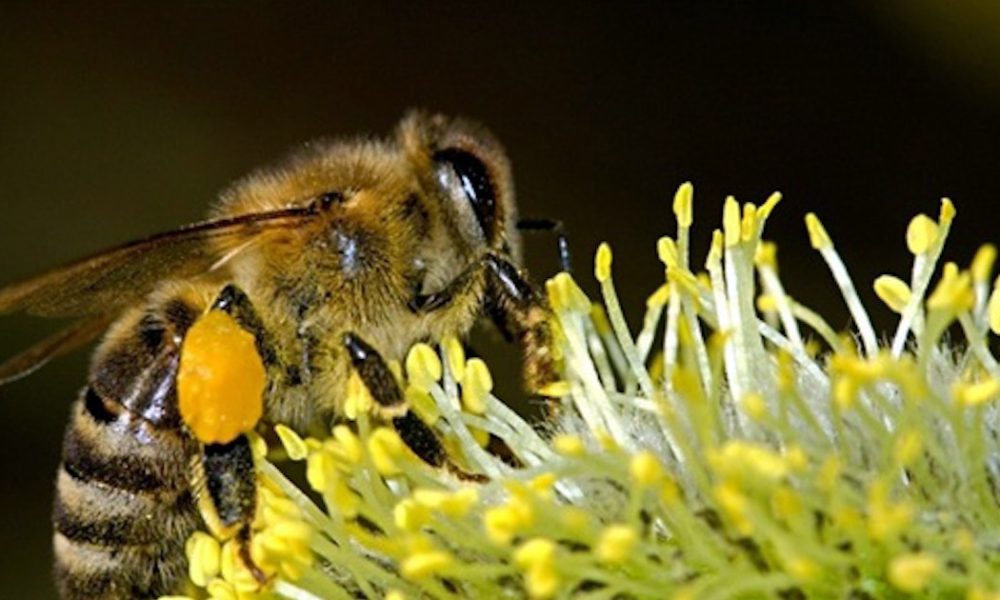 File Photo
File Photo
What’s the first thing you think of when you think of honeybees?
Most of us will respond honey of course, and who hasn’t been soothed by a cup of hot tea and honey for a winter (or Spring Hay Fever) sore throat.
Historically, those busy bees have offered us many other gifts from their hives. Let’s explore how these byproducts have added to our lives, and in many cases offered many benefits to our health.
Along with raw honey, other offerings from the hive are bee pollen, propolis, royal jelly and versatile beeswax.
If you have an occasional burn or wound; blood sugar issues; high cholesterol and cardiovascular issues; or just want more energy, then keep a supply of raw honey on hand.
A study in India showed that honey applied to a burn instead of the conventional topical treatment silver sulfadiazine showed that honey was a preferred choice. After one week, 7 percent of those people using the silver salve were infection free, while 91 percent of those studied that used honey were free of infection. The honey-treated burns healed faster also.
Which would you choose and how does this work?
Honey is composed of glucose and fructose; both of these sugars strongly attract moisture, keeping the burn site or wound dry and free of bacterial growth. When combined with water, glucose oxidase – an enzyme present in honey – becomes hydrogen peroxide, a commonly used antiseptic.
For blood sugar balance, the sugar composition of honey is a 1:1 ratio of fructose to glucose, which is easily stored in our liver and muscles as glycogen to be converted again to sugar as needed for fuel or brain function.
One study of subjects with normal and high cholesterol compared the effects of honey, table sugar, and artificial honey on their levels of cholesterol, C-reactive protein, homocysteine (markers for cardiovascular disease).
In these cases those that used the honey had reduced cholesterol of 7 percent, c-reactive protein also 7 percent, homocysteine and blood sugar reduced by 6 percent, and their HDL (good cholesterol) increased by 2 percent.
The subjects that were given the table sugar and artificial honey had increases of all the levels with the C-reactive protein increasing a whopping 75 percent.
Another energy source from the hive is bee pollen, available at most farmers’ markets or packaged in your local health food stores.
Researchers at the Institute of Apiculture, Taranov, Russia, found that, ”honey bee pollen is the richest source of vitamins found in nature in a single food.”
They found an important flavonoid for capillary health present in bee pollen, rutin. The researchers concluded that this nutrient – at a dosage of one teaspoon daily – could alone justify the addition of bee pollen to our diets.
Pollen is a rich source of protein, which is present in the form of free amino acids – the building blocks of protein. Local bee pollen has been found to reduce allergy symptoms, but you need to plan ahead and take regularly for a few weeks prior to allergy season.
Used by the bees to fill small gaps in the hive, propolis is a sticky, resinous ”goo” the bees make from collected tree sap and resins.
According to health educator and author Dr. Andrew Weil, propolis has many uses once extracted from the hive. Used in the production of chewing gum, cosmetics, throat soothing lozenges and ointments, propolis has also been investigated as a dental sealant.
Royal jelly’s moniker is a hint to its powerful benefits.
Collected from the hive cells where the fertile queen bees mature, royal jelly is produced by the worker bees as food for larvae, especially the maturing queen bees. A protein called royalactin supports the larvaes’ ovarian development. This powerful food has nourished human populations as well over the centuries.
Beeswax, which bees use to build honeycomb cells where their larvae are raised and honey is stored, has had many uses besides the candles we use for special occasions. Ten pounds of honey extracted from the hive in processing will usually yield around one pound of beeswax. Other common uses for beeswax are polishes for shoes and furniture, and as an ingredient in many body care balms and salves.
Important note: Do not feed honey-containing products or use honey as a flavoring for infants under one year of age; honey may contain Clostridium botulinum spores and toxins that can cause infant botulism, a life-threatening paralytic disease. Honey is safe for children older than 12 months and adults.
Enjoy these gifts from the hive, and enjoy the many benefits … and the soothing honey flavor in your next cup of tea. My favorite is our local Bear Mountain Honey, with it’s next generation of purveyors, Wendy and Nick. Available at many vendors around town including Blue Valley Bistro and at my store in Eugene.
Salud!







